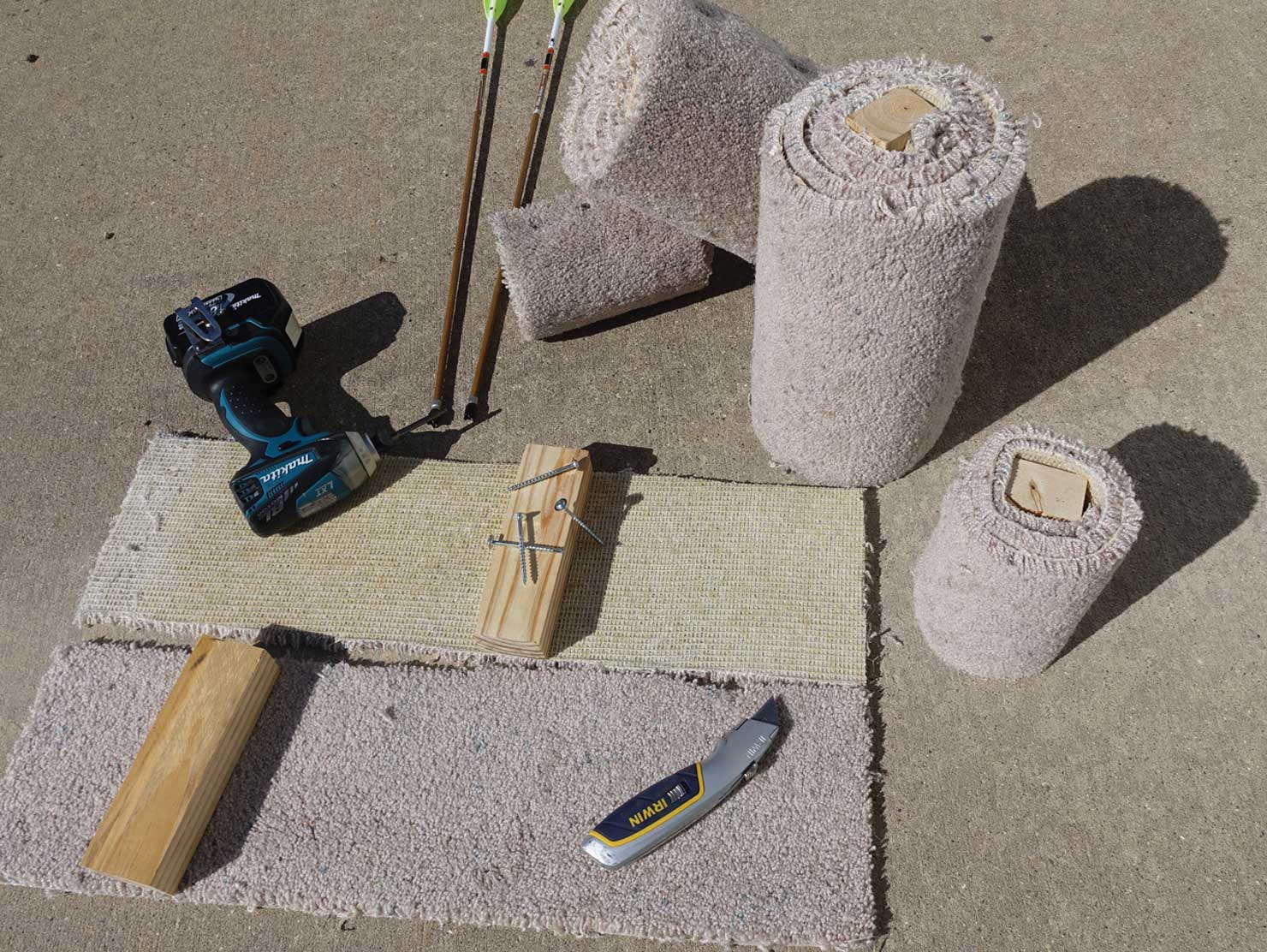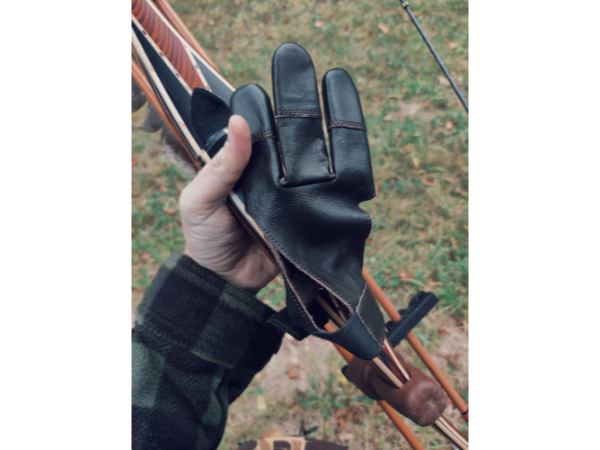Buying targets and setting up an archery range can cost thousands of dollars. In this piece, I’d like to share how to create inexpensive targets and a fun way to set up a challenging archery range that can surely boost your hunting accuracy.
A few years ago I read about the Muzzy Invitational Stump Shoot, started over thirty years ago by legendary bowhunter and archer John Musacchia. The founder of the Muzzy broadhead, John was respected by all who knew him. John passed away in 1995, but his son, John Jr., keeps his tradition alive. The Muzzy Shoot is held in the Catskill Mountains of New York. No compound bows, sights, or releases are allowed—only longbows and recurves.
I’ve never attended the Muzzy, but one of my buds, Curt Cabrera, who has been going since 1986, recently explained more about the Invitational. The targets are 2-inch-thick ethafoam (8×10 or 5×5 inches) held on top of a stump or 4X4 with industrial Velcro. You must use Zwickey Judo points or Muzzy Grasshoppers on the end of your shaft. To score a point, your arrow must dislodge the cube of foam from its perch.
Curt says all archers shoot a qualifying round and then are seeded appropriately in a tournament bracket. All shooting is one-on-one on the three courses. There is one target at each shooting station. The shooters get first chance at either the odd or even targets, determined by a coin toss. If an archer fails to remove his or her target, the opponent gets a crack at it, as well as an opportunity to gain a point. If the opponent doesn’t connect, the first archer gets one more chance. Both archers can shoot a maximum of two shots at a target left standing. If four shots don’t get the job done, no point is awarded, and they move on to the next shot.
There are a variety of shot positions and situations on the ranges, including a 50-yard shot across water and one shot known as “thread the needle.” There are classes for longbows and recurves and the number of archers is reduced each round, tournament bracket style. At the end of the tournament, the longbow and recurve class winners shoot it out for the title of overall champ. My friend Curt has placed many times and won overall champ three times. His son, Cade, has won his division six years in a row.
With all of this in mind, I set up a range similar to the Muzzy shoot on my 14-target range behind the house. I used white pine stumps and logs to place the targets on, as they were softer than other options when a shot hit low. I also set two foam blocks at each station to provide more shooting opportunities.
This course can be shot alone, or you can compete with two or more shooters. We frequently put names in a hat and make two-or three-man teams. If there is an odd number of shooters, one team may have an extra shooter. That team just rotates shooters normally, so there is no advantage.
The rules of engagement are as follows: One shooter (or team) picks the shot distance (0 to 65 yards) and calls which target they want on every other target. Some targets are side-by-side, and some are above or below. If you hit the other team’s target, then they get the point. If the first team hits its target, the second team then shoots at its own target. If they also connect, each team gets one point. If the first shooter misses and the second shooter connects, the second shooter can shoot at the first target. If the second shooter connects again, that team gets both points. If the first team hits its target and the second misses, the first gets a chance to take both points. We rotate to a new shooter on each shot when we have multiple shooter teams. If a target is missed four times no one gets a point, and we move on. This kind of shooting occasionally damages arrows. I recommend flexing and visually inspecting arrows after each shot.
The only problem with the range was maintaining the foam and Velcro. We shoot constantly, and I spent a lot of time replacing Velcro and blocks as the points from our heavy hunting bows demolished the foam.

Cheap, easy to build, and effective, rugballs will force you to pick a small target, improving your accuracy. And they are fun to shoot!
My dad solved these maintenance problems by inventing rugball targets. They are simply a strip of carpet wrapped around a 1 1/2” diameter or so piece of wood cut to the same width as the carpet. The carpet is held in position with a couple of washer head screws installed through the outside end of the carpet into the wood core. The top and bottom of the roll is flat and sits nicely on a log or stump. We always position the screw heads to the rear so we don’t hit them. We use blunts like the Hammer, from 3Rivers Archery, to shoot them. The rugballs are easy on arrows and hold up to a full season or more of heavy use.
Dad made the balls in pairs of the same size. The sizes varied on possible shot distances of each target’s location. Used carpet or carpet scraps can usually be obtained free, and the same applies to wood scraps or even limbs of trees. Basically, for the price of some washer head screws, a few utility knife blades, and some labor, you can make enough targets for an entire range in a few hours.
Members of the Jackson Bowmen in Michigan now host an annual 2-man team rugball tournament after participating in one of our shoots.
One of the keys to consistently hitting these targets is picking a spot in the center to aim at. If you shoot at the whole rugball, it seems that you miss or just catch the edge. If you have an area to set up a round like this, I highly recommend it. It won’t break the bank, you can become a better hunting shot, and I think you will have a bunch of fun.







Leave A Comment